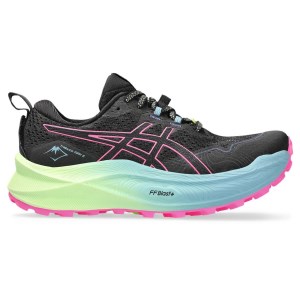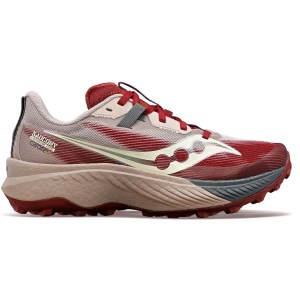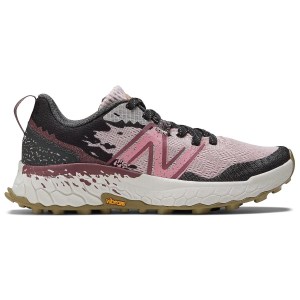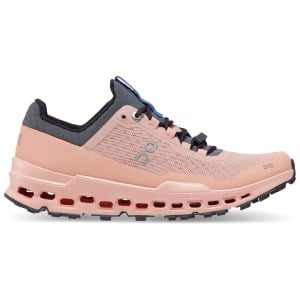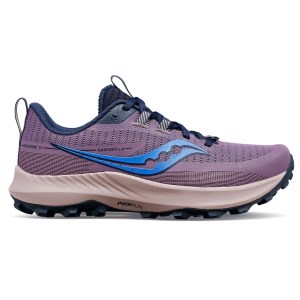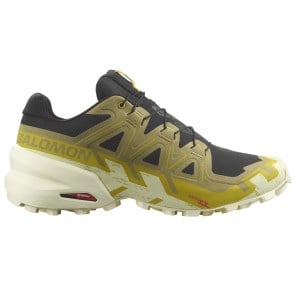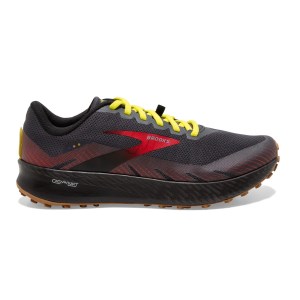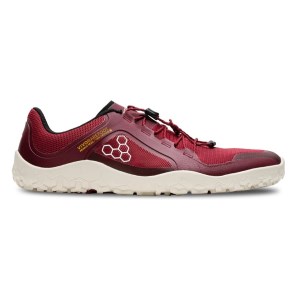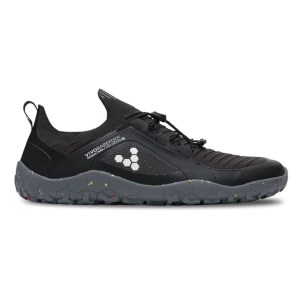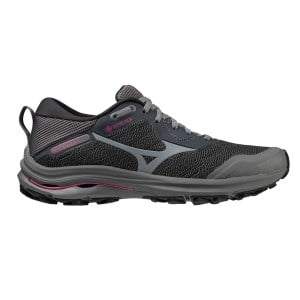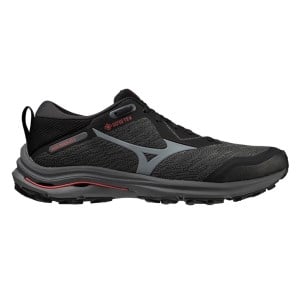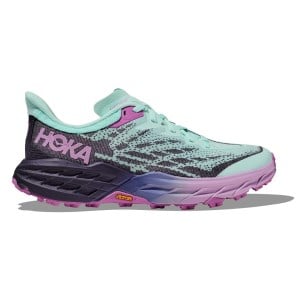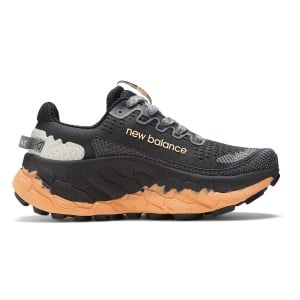What's The Best Trail Running Shoe For You?
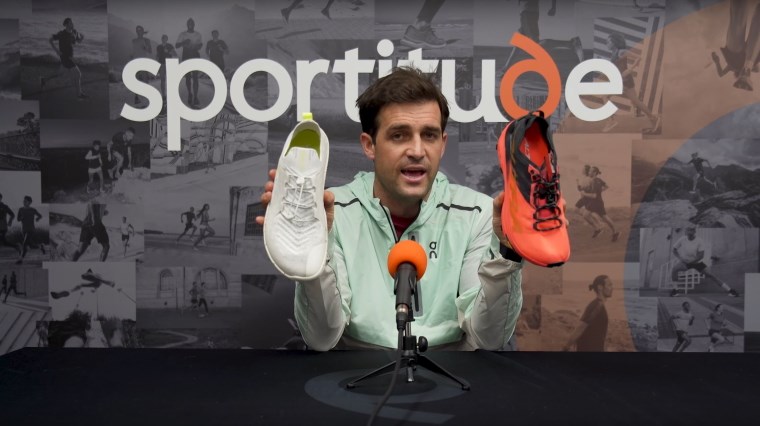
Trail running has ever-growing popularity in Australia with the country's abundance of pristine and rugged bushland. Trading the hustle and bustle of city life or suburbia for the serenity of nature is mood-boosting - doubling up on the positive benefits of running on your mental health.
Trail running shifts your scenery to uplift your mind. It also challenges your mind and body in new ways compared to the steady nature of the road as you navigate gnarled roots, sharp rocks and shallow streams – a test of your proprioception.
What's more important than choosing the most popular trail running shoes, is choosing the best trail running shoes for you to inspire confidence on challenging terrain. Their level of cushioning, stability, traction and adaptability all play a part in achieving your 'perfect' ride and supporting your overall comfort and running goals.
Running shoe expert Josh Willoughby discusses trail running shoes – giving you an insight of their engineering components and how they vary from road running shoes, alongside the different categories of trail running shoes.
From max stacked trail running shoes that provide mountains of cushioning between your feet and the ground, to connected trail running shoes that offer a barefoot running experience to move more intuitively – there’s a trail running shoe for you to embrace the benefits of off-road running.
Check out the video with full transcript below.
Hey guys, Josh here from Sportitude Running. Today we're going to be talking all things trail running shoes. Trail is a growing category - it's massive here in Australia and it's huge all over the world, especially in Europe and North America and the brands know that. The brands are making more trail running shoes every single season and they're making more advancements within their trail shoe technologies.
In today's discussion we're going to talk about what makes a trail shoe; breaking down the upper, midsole and the outsole and how it differs to that of a road running shoe.
We're also going to give you an idea of how we categorise the trail market. There is a number of things that we consider when we put a trail running shoe on someone's foot. We want to make sure it's fit for purpose, so we ask a lot of questions. There is so many different categories and engineering features so that brands can get the majority of the market covered - that's their aim.
There's a lot to get through in today's review. Go make yourself a cup of tea or a coffee, sit down and let's get stuck in.
Trail Running Shoes vs Road Running Shoes
Before we jump into categorising the trail range, let's talk about the variances between trail and road.
Upper
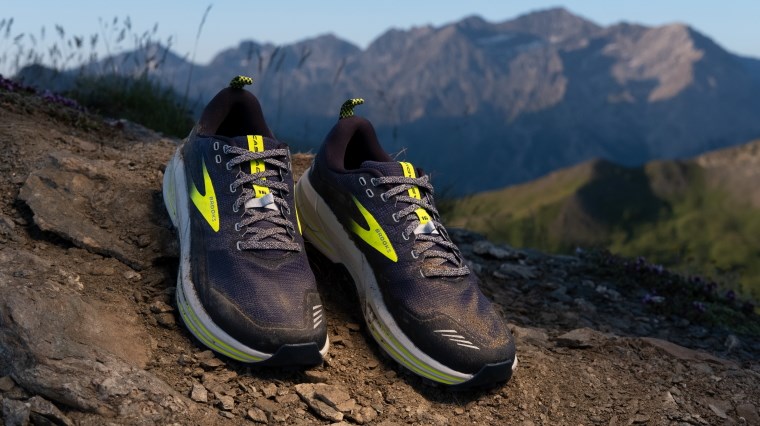
First things first, let's talk about the upper. With trail running shoes, the main difference is that you have a bit more protection up top.
The toe box of a trail running shoe has a harder material at the front to protect your toes, in comparison to a road running shoe which is very light and breathable through the toe box to the midsection of the shoe. You will find the saddle to fit similar in both the trail and road categories, however there's more overlays within trail running shoes. On the medial side and lateral side you’ll have a little bit more of a wrap to keep your foot nice and stable. Road running shoes have some form of construction through the midfoot, but not quite as dialled in as your trail running shoes.
The heel counter plays an important part of keeping the overall foot nice and stable. Both trail running shoes and road running shoes have internal heel counters. In some cases, you'll find in trail running shoes that brands will either lift the back of the shoe up to give more protection or have another construction around the back of the heel counter to keep it nice and stable.
The other notable thing to consider is that road running shoes are very light and breathable. Trail running shoes are still breathable, however there's a bit more configuration in the upper to keep the foot protected and as dry as possible.
Outsole

The next thing to talk about with trail running shoes versus road running shoes is the outsole. This is where trail running shoes are vastly different than road running shoes. With a road running shoe, more often than not there's less rubber on the bottom because there's not a lot to consider.
Obviously, they must protect the running shoe on those bitumen and pavement surfaces to avoid friction and unnecessary wear. Brands will use their appropriate rubber to protect the asset being the midsole.
However, when it comes to trail running, we are going to be up, down, sideways, skipping, jumping and landing on rock, sticks and twigs, so we need to have the outsole doing all it possibly can to keep that foot and the body nice and balanced across a myriad of different surfaces.
The Saucony Speedcross trail running shoes (above) have large lugs. Not all trail running shoes are like this, but this is probably one of the most aggressive in grip. You have different lugs placed across the whole outsole, being the heel, the midfoot and the forefoot to give you as much grip as you possibly can to gain control on unstable surfaces.
With trail running, we know we're going to be going through mud and on some hard fire tracks from time to time. We're going to be stepping on things that could protrude through the shoe, so the outsole is important to keep your foot protected, comfortable and stable on those trail running surfaces.
Midsole
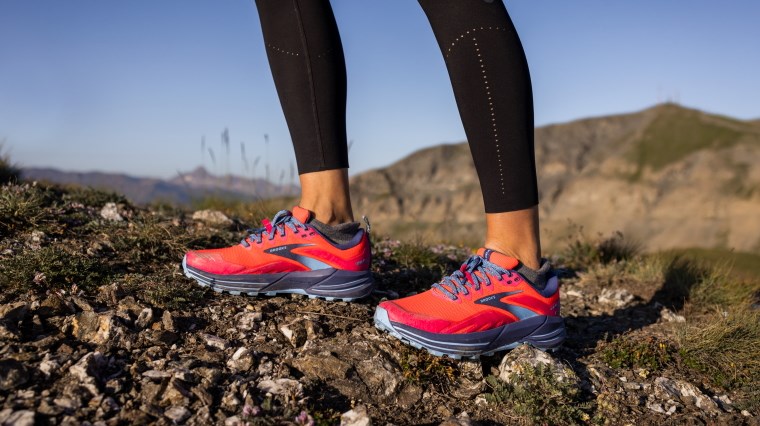
There’s not a lot of variance between a road and a trail running shoe in terms of the midsole. Brands within their categories are trying to achieve the optimal outcome of performance, fit and function with their midsoles and the same thing goes with trail running shoes.
The main difference between them is the traditional guidance/posting construction you find in some road shoes, where brands will inject some form of support on the medial side to keep the foot from overpronating or slowing the rate of pronation down.
We don't see that with trail shoes in today's market. The main reason is there's so much inconsistency with your foot placement on trail surfaces, so it's very hard to dial in the appropriate amount of arch support on the medial side.
The other thing to consider is brands sometimes will use some form of either TPU construction within the midsole called a Rock Shield Plate. The Brooks Cascadia (Brooks Cascadia 16 GTX above) is a perfect example of that. They've used a Rock Shield Plate within their midsole for a number of years.
Brands again can achieve Rock Shield Plates with good outsoles, but some brands will call it out and they'll let us know if they have ever so slightly changed the midsole with that technology.
6 Categories of Trail Running Shoes
Let's jump into today's broad review of the trail market. First things first, we categorise the trail running shoes into the following;
- Max stacked
- Cushioned
- Balanced
- Responsive
- Connected
- ATR - all-terrain running
If you're coming into the trail market, more often than not you've had a road running shoe. If someone's buying their first trail shoe we encourage them to bring in their favourite road running shoe because then we can line-up where they've come from road and put them into the right or most appropriate category for them in the trail market. That’s obviously considering that their road running shoe has been successful and been very comfortable.
In today's review we're going to touch on a couple of examples in each category, call out the engineering features which puts them within that category and ask all the questions that hopefully you have at home with regards to trail running shoe selection.
Max Stacked Trail Running Shoes
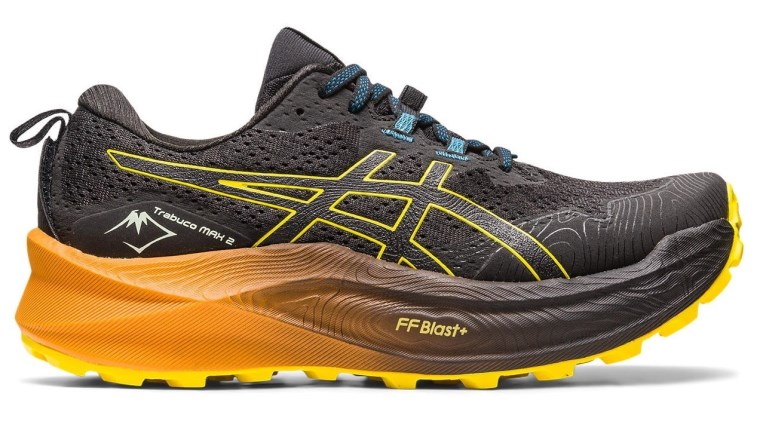
Let's talk all things max stacked or max cushioned trail running shoes. On the table in front of me I have the New Balance Fresh Foam More Trail and the Asics Trabuco Max (above). A couple of other shoes in this category to consider would be the Hoka One One Stinson and the Altra Olympus. All four of those trail running shoes are classified as max stacked.
There's a lot of foam or a lot of shoe underneath the foot. You're going to get a lot of cushioning and plushness underneath the foot for your foot placement. The trade-off is you don't have the most connected feel with the ground, so you lose a little bit of proprioception regarding your foot placement. That can be a good thing for some people in terms of the overall cushioning experience.
However, there are a lot of trail runners out there or some portion of trail runners that want to feel the ground, want to know where their ground and connection is and we'll go through some other options later in this review.
With this category, we are putting people inside these trail running shoes for the first time if they're coming from the road and running in shoes like your Hoka Bondi, Saucony Endorphin Shift or the Asics GlideRide to name a few.
Coming from that into this category, you probably enjoy that rolling sensation and ride on the road. You'll more than likely feel comfortable with what the max stacked category has to offer for your trail options.
Cushioned Trail Running Shoes
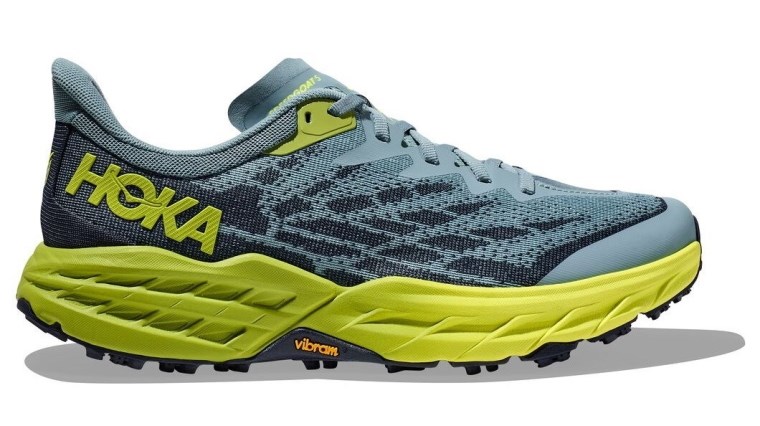
The next category we're going to be speaking about today is our cushioned trail running shoes category. There might be a little bit of confusion here from max stacked to cushioned and what we classify as balanced cushioned.
For a lot of these trail running shoes we're talking about right now, the marketing message from the brands will be in and around cushioning and comfort. It can be confusing for you, the trail runner, so hence we're doing this review today.
In front of me I have the Saucony Endorphin Edge and the Hoka Speedgoat. Another couple of trail running shoes to consider in this category are the Altra Timp, the New Balance Fresh Foam Hierro and the Salomon Glide Max TR, just to name a few.
The Salomon Glide Max is Salomon’s most cushioned trail running shoe. In theory, you would think that'd be in the max cushioned category, however it is not. It competes also with all these options we’re talking about to you today.
You find with this category, being cushioned, that it's going to be soft underneath the foot. You're going to get plenty of protection underneath the body so when you're hitting those trails and you want to make sure that you're getting all the cushioning you require, you're certainly going to find it within this cushion category.
If you like the cushioned category, the Hoka Clifton, New Balance 1080 and Asics Gel Nimbus are all cushioned shoes for road running.
-
Saucony Endorphin Edge - Womens Trail Running Shoes
-
New Balance Fresh Foam Hierro v7 - Womens Trail Running Shoes
Balanced Trail Running Shoes
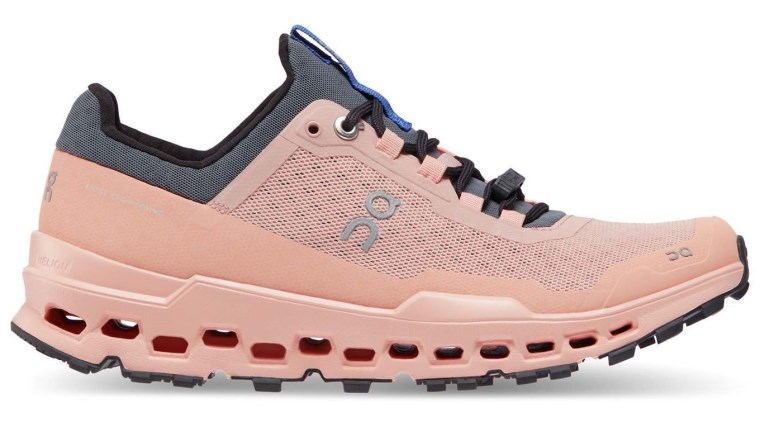
The next category of trail running shoes is the balanced category. The balanced category makes up the most market share regarding our trail offering. In this category we have a few things to consider. We're getting cushioning underneath the foot and we're also getting a stable ride and response through toe-off, so it does tick most boxes like your road shoes in this category. This includes the Brooks Ghost, New Balance 880 and Asics Gel Cumulus.
All of them have elements of cushioning and response through the forefoot. While we're touching on that, if someone's coming to us and looking for their first trail running shoe, we'll probably start off in this category and then we can either go more cushioned or we can go more responsive. It's the perfect halfway shoe to find out what someone does and does not like within their trail shoes.
The Brooks Cascadia, On Cloudultra, Saucony Peregrine and the Asics Gel Trubuco all fit into the balanced trail running shoe category.
Responsive Trail Running Shoes
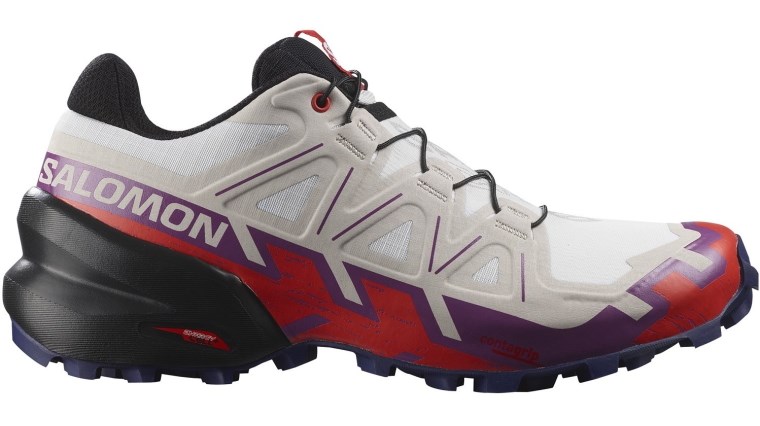
The next category of trail shoes is the responsive category. I have a couple of trail running shoes in front of us, including the Nike Air Zoom Terra Kiger and the Salomon Speedcross (Salomon Speedcross 6 above).
Responsive is pretty self-explanatory. You're not going to get a whole heap of cushioning. There is both a little bit underneath the foot, but it's more about what you feel on release out of your gait cycle. Both of the Nike Air Zoom Terra Kiger and the Salomon Speedcross trail running shoes have a snappy feel. Another trail shoe that fits in this category is the Brooks Catamount. Road running shoes to consider in this category are your Brooks Launch and Hoka Mach.
They don't make up a whole heap of numbers within both trail and road categories. A lot of this discussion for us when we're talking road is around shoe rotation. You may want something a little bit lighter and more responsive for your shorter runs.
Not a lot of people out there have the luxury of having two or three trail running shoes on the go. What we tend to find is the person who's going to be looking at this category could potentially be the more experienced trail runner, someone that may not be running an Ultra, 50km, 100km, 100km plus event, but someone that is pretty confident, stable and has a relatively efficient gait.
They may want to run a little bit quicker on those trail surfaces to engage the midsole to get that responsive feel. The responsive category just to be clear is not overly cushioned. There's an element of cushioning but it's more about the stability and release out of your gait cycle.
-
Salomon Speedcross 6 - Womens Trail Running Shoes
-
Salomon Speedcross 6 - Mens Trail Running Shoes
-
Brooks Catamount - Mens Trail Racing Shoes
Connected Trail Running Shoes
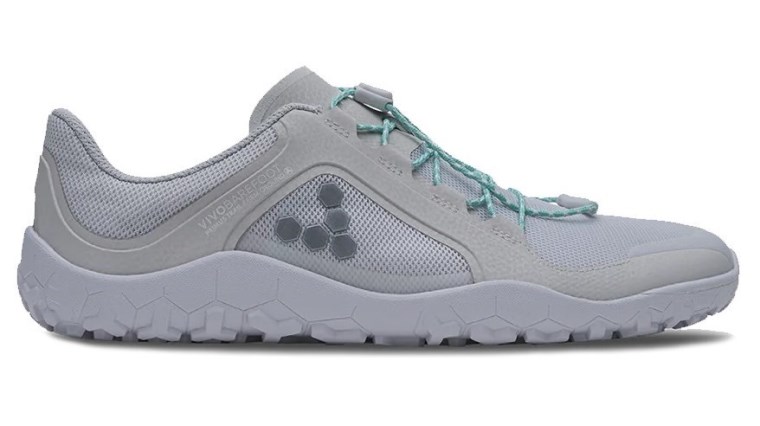
The next category of trail running shoes is the connected category. Like the name suggests, we are as connected to that trail surface as we could possibly get.
The Vivobarefoot Primus Trail ensures there’s not a lot between your foot and the trail surface. All we have is a really grippy/traction outsole from the trail running shoe. You're going to get a really good, connected feel with the ground and know exactly what's going on underneath your body.
The other shoe to consider is the Altra Mont Blanc. It’s a very popular, very well received trail racing shoe all around the world. This running shoe is a little bit more cushioned. There is a foam piece or the EGO Max cushioning construction which is going to give your body a little bit more protection. However, being zero drop it feels very close and very connected to the ground.
You'll find that the toe boxes are a little bit more generous in this category. When you are on a zero drop or a very close to the ground feel with that barefoot element, you want to be able to splay your forefoot and you can do exactly that with both the Vivobarefoot Primus Trail and Altra Mont Blanc. You remain connected, balanced and your foot can splay and disperse all the shock through that forefoot as it possibly can.
Another couple of other road shoes to consider or throw into this category include the Vivobarefoot family. The Vivobarefoot Primus is another prime example of what you could consider from road to trail. The Altra Escalante family again have pretty similar characteristics to the Altra Mont Blanc. It provides an easy transition from road to trail. You have both options covered which is fantastic.
-
Vivobarefoot Primus Trail 2.0 FG - Mens Trail Running Shoes
-
Vivobarefoot Primus Trail Knit FG - Womens Trail Running Shoes
-
Altra Escalante 3 - Mens Running Shoes
All-Terrain / Hybrid Running Shoes
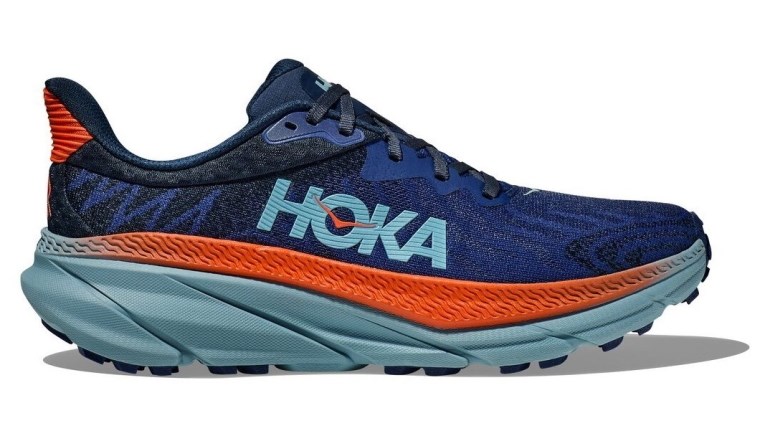
Last but certainly not least, let's talk about the all-terrain running or the hybrid category. As the name would suggest, this category of trail running shoes is designed to go on both bitumen or pavement, and also hit the trails and go off-road.
With that in mind, the characteristics within this category are so similar to your road versions, however there's a couple of alterations. I have the Hoka Challenger ATR 7 (above) and the Mizuno Wave Rider here. The Hoka Challenger is built off of the Hoka Clifton engineering, and the Mizuno Wave Rider GTX trail running shoe as it would suggest is coming from the Mizuno Wave Rider road running shoe.
The only real difference is you have some element of traction stability underneath the shoe itself. As I touched on, it needs to be able to hold up on bitumen and pavement and also give you some confidence and stability when you head off-road.
The outsole is engineered or configured to give you confidence on both surfaces. The midsole is very similar and the upper in the Hoka Challenger is slightly more refined. It's very similar to what you get out of your Hoka Clifton.
The Mizuno Wave Rider GTX has Gore-Tex in the upper, providing a waterproof construction, a little bit like the Brooks Ghost GTX. The upper while it is Gore-Tex is very popular and it's probably more popular for your trail walkers. There are a portion of trail runners that like Gore-Tex uppers and that is absolutely fine.
We tend to find Gore-Tex constructions are more targeting walkers that are going to be easing themselves through long grass, shallow creek beds or shallow puddles. When you're trail running, your foot gets a little bit hotter and it will get warmer inside a Gore-Tex upper than it would a water-resistant upper from most of your other trail categories.
Another thing to consider with Gore-Tex trail running shoes is if the water gets in the top it can't get out. It sloshes around and the moisture gets absorbed inside your running sock, so it becomes rather uncomfortable.
Another shoe to consider in this category is the Nike Pegasus Trail. It’s a very popular shoe here at Sportitude Running and all across the world for that matter. It’s a shoe that's comfortable on road and it gives you some element of protection as you hit the trails as well.
This category is for someone literally doing a 50-50 or a 55-45 split between trail and road and hasn't really committed to one surface over the other. It caters for both markets which is fantastic.
-
sold outMizuno Wave Rider GTX - Womens Trail Running Shoes
-
Mizuno Wave Rider GTX - Mens Trail Running Shoes
How To Choose More Stable Trail Running Shoes
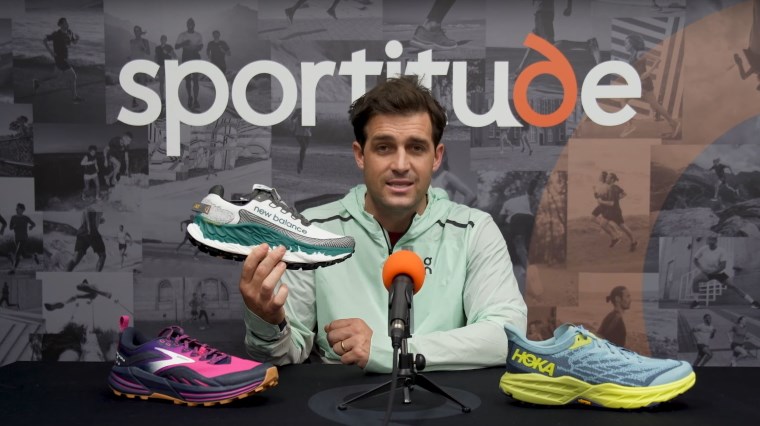
Before we finalise today's discussion on trail shoes, the biggest question we get asked is from someone transitioning from a road shoe with arch support to a trail shoe… something like “I've been using the Asics Gel Kayano / New Balance 860 / Brooks Adrenaline and I want to get myself into a trail shoe”.
As I said in the intro, there's literally no medial support within trail running shoes any more. There used to be, however how this category has progressed into what we see now in 2023, arch support isn't really a requirement within the medial side of these shoes.
Arch support is a loose term. I want to make it really clear, there is arch support within these trail running shoes, but there is no medial structured support.
Medial support is offering an element of pronation stability for someone who's looking to reduce the range of movement or slow down the rate of pronation. Arch support does exist in all trail running shoes but it doesn't in the way of dual density posting.
As I touched on, someone's walked in off the street that’s an overpronator. They’ve been using Asics Gel Kayano or the New Balance 860 and they want to find themselves a trail shoe. The first thing we look at is something with a broader surface area.
The Hoka Speedgoat is a fantastic example, offering a great footprint. The Brooks Cascadia also offers a nice and broad fit through the heel. They’re stable through the midfoot and have a slightly wide forefoot construction.
As I touched on during this review, the balanced category and the cushioned category tend to be where most of people will fall when they're looking for their first trail shoe. We'll start off there and we can go either more cushioned or more responsive, but it's a great starting point for us.
The New Balance Fresh Foam More Trail is max stacked and you need to be in tune with that amount of cushioning or midsole underneath your body for you to ever consider this category. However, when you're coming from something like a Hoka Arahi and you're looking for new a trail shoe, we might start at the New Balance Fresh Foam More Trail or the Hoka Stinson for example.
With a nice broad footprint and a lot of surface area, your foot is going to get a nice stable transition through the whole gait cycle.
I want to make it clear if you're overpronating, that it's perfectly normal and it's A-OK on the trail surface because your foot placement is different every single time your foot makes contact with the ground.
When we're running downhill we tend to overstride and when we're running uphill, we have a shorter cadence. On the trail we're stepping over bits and pieces on the trail surface, so not every foot placement is the same as the other. It’s not quite as consistent as you would find on the road and pavement surfaces.
-
Hoka Speedgoat 5 - Womens Trail Running Shoes
-
New Balance Fresh Foam More Trail v3 - Womens Trail Running Shoes
The Wrap Up
That review was a little bit longer than anticipated. It's important though because we need to cover the whole entire range of categories, from your max cushioned right through to all-terrain and everything in between. It’s vitally important for you if you're considering a trail running shoe to start at the right spot, and a lot of it has to do with where you're coming from with your road shoes.
Or for that matter, if you're coming from another trail running shoe and you want a little bit more or a little bit less, this will give you some information at home to potentially start you on your trail running shoe selection journey.
We love hearing from you all around the world on all things running whether it be road or trail. Let us know your favourite trail running shoes if you're a trail fan. If you're having some troubles finding the most appropriate trail shoe we are here to help. Contact our Sportitude shoe experts and we'll get to your questions as soon as we possibly can.
The trail category is growing. We love servicing you the trail community so keep it up, get out there, smash those trails, chase those adventures and we look forward to seeing you next time.
Stay safe, be kind to one another and we'll see you on the trail.
If you liked this, you'll love:
Trail Running Shoes vs Road Running Shoes
Trail Running Is Harder Than Road Running, Here's How To Make It Easier

